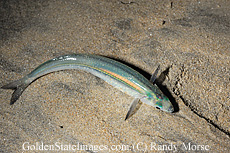
Leuresthes tenuis
FAMILY
Atherinidae
TAXONOMY
Atherinopsis tenuis Ayres, 1860, San Francisco, California,
United States.
OTHER COMMON NAMES
French: Capucette californienne; Spanish: Pejerrey californiano.
PHYSICAL CHARACTERISTICS
Grows to 7.5 in (19.0 cm) maximum length. An elongate silverside
with a prominent silvery lateral band and bluish green
coloration on the back.
DISTRIBUTION
Monterey Bay, California, to the southern Baja Peninsula.
HABITAT
Coastal marine waters.
BEHAVIOR
Known for its peculiar spawning
BEHAVIOR
. When grunion
emerge from the surf to spawn on beaches, they can be collected
by hand.
FEEDING ECOLOGY AND DIET
Feeds on zooplankton.
REPRODUCTIVE BIOLOGY
Spawns en masse above the waterline on beaches during highest
tides of the spring and summer months. Both males and females
ride in with large waves and are left exposed on the sand
when the water recedes. Females burrow tail first into the sand
to deposit their eggs, and attending males fertilize the eggs as
they are released. After spawning, adults return to the sea.
They are capable of spawning numerous times. The eggs hatch
in about two weeks, upon being agitated by another high tide.
Buried grunion eggs provide food for shore birds, crabs,
isopods, and beetles.
CONSERVATION STATUS
Not threatened.
SIGNIFICANCE TO HUMANS
Collected by hand during spawning runs.
Photo Gallery of - California grunion

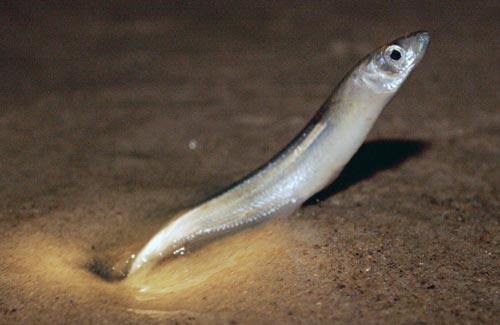
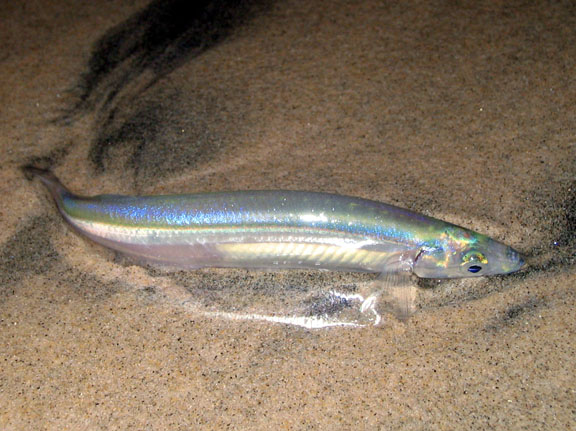
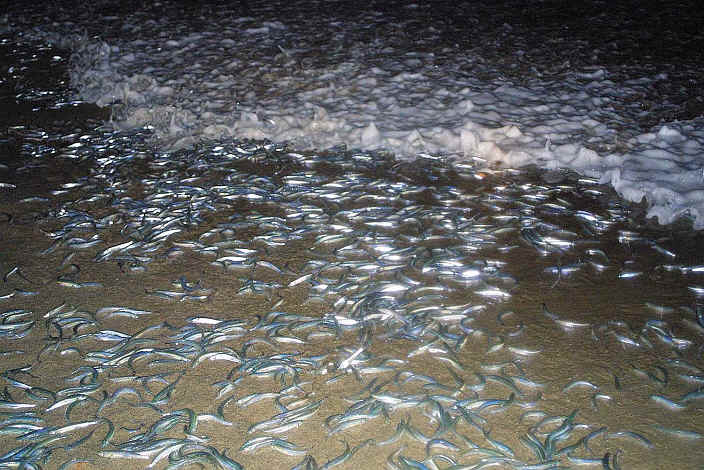
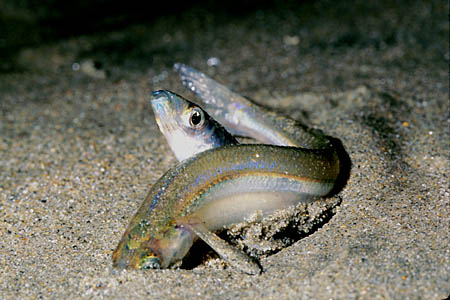
 Animalia Life
Animalia Life